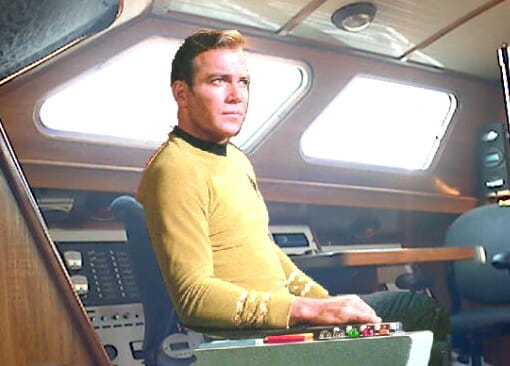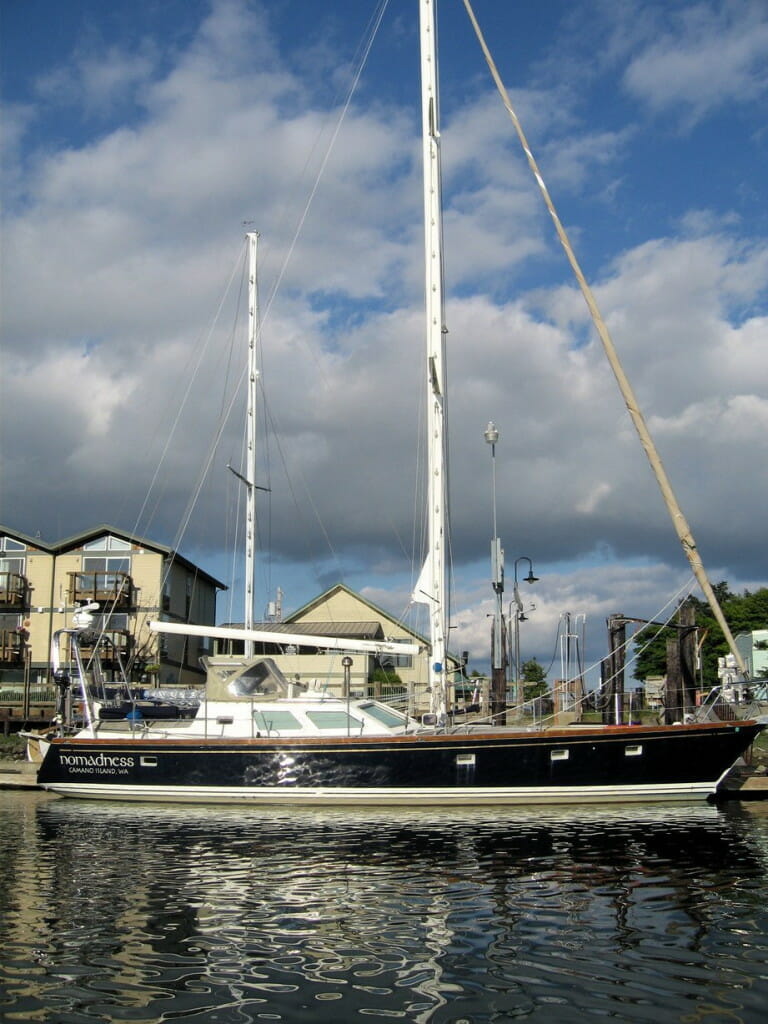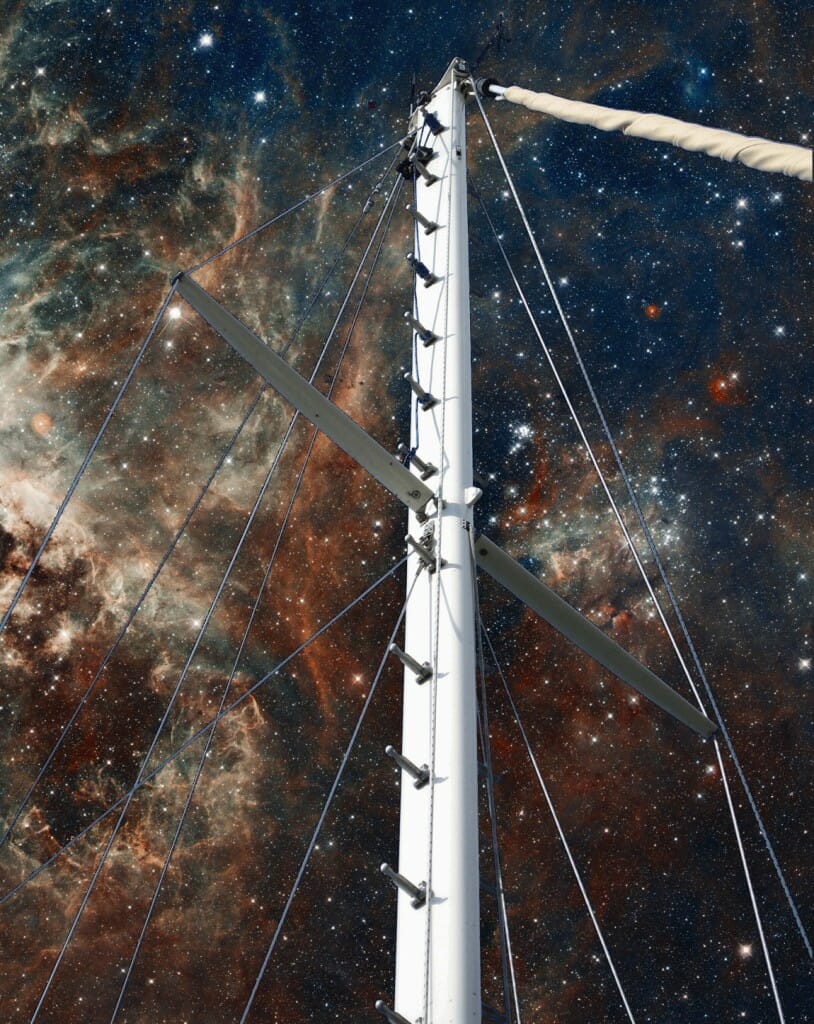Welcome to the Starship Nomadness
This creaky page is the old home of Nomadness, the technomadic substrate of Nomadic Research Labs. Articles about all are at the Microship site, but this one is focused mostly on the boat (which is about to go to her new skipper).
The space imagery on this page is no accident. Nomadness is already a capable voyaging sailboat, but the real intent of this project is much more in the realm of starships… even if earth-bound.
Full-time life aboard a vessel of this scale involves a huge learning curve and nonstop focus… with interacting systems from bow to stern that handle power, fresh water, sewage, navigation, communications, propulsion, refrigeration, life support, heating, safety, entertainment, information, and more. Historically, all these have been inscrutable clusters of machinery, non-interoperable, with boxes of spare parts and binders of manuals. Toss a geek like me into the mix, and there’s another layer of blinkenlights, Arduinos, servers, radios, lab equipment, audio, and perhaps even a few gratuitous bits of gizmology.
Feline interlude: Here is Izzy, who swiped my phone one day and was taking selfies around the boat…

Isabelle, aboard s/v Nomadness
All this nautical geekery translates into a huge mess if we’re not careful… and every few months I hear from another sailor who is exasperated by the whole idea, urging me to simplify and go now, reminding me that everything on a boat eventually fails. And they are right: life is short, complexity is insidious, water corrodes, and salt water corrodes absolutely. But rather than take this as a warning, I see it as seductive. And here’s why:

Our guest captain
Imagine that you are captain of a self-sufficient mobile pod, capable of traveling anywhere you desire. Everything is at your fingertips; not only can you drill into all your ship’s subsystems via a browser (graphically integrating a thousand or more sensors and derived data points), but you can explore your immediate physical environment in detail, monitor the radio spectrum from “DC to daylight,” communicate globally via multiple independent paths ranging from ham radio to satellite internet, hunker inside while keeping watch via steerable cameras and microphones, secure your perimeter, remotely access ship systems from anywhere in the world, play the piano, produce podcasts and videos, design and fabricate new machines, generate power, scrounge heating fuel, grow food, and still enjoy all the benefits of a highly evolved toolset for marine navigation with chart plotters, radar, instruments, and other networked tools.
Obviously, the information side of this is an interesting challenge. Thanks to an always-on server and a network of distributed nodes, every data point on the ship has a corresponding software object that dynamically reflects real-world changes, allowing disparate systems to be integrated into a single environment… accessible from any computer, tablet, or phone on board (or off). This goes far beyond replacing blinkies and gauges with pixels; once everything is integrated into an object model, it becomes possible to anticipate failures by observing aggregate behavior even if no single sensor is out of range. The database can be mined for historical analysis, and event triggers can be as simple or complex as needed.
All that is under the hood, of course; what’s more immediately sexy is the physical environment of our water-borne starship. Once we accept that this is an exercise in gonzo engineering as much as comfort, it becomes possible to make a few changes from the traditional small voyaging craft with saloon and dinette… why not incorporate a few consoles besides the basic control surfaces in the pilothouse? How about an audio production studio, ham shack, electronics lab, Internet alcove, computer workstation, a 3D printer, and space for machining and other jobs?
Somewhere in the imaginings above, you probably sensed the shift from essential toolset to ultimate toy. The tricky part is making that leap without crushing the substrate or turning it into work; what we need here is a blend of art and engineering that retains the alluring beauty of a small sailing craft while overlaying an extravaganza of geek expressionism that ensures ongoing stimulation.
This website is about that. The project is long and arduous, beset by multiple simultaneous threads, feature bloat, mission creep, fast-moving technology, resource limitations, back pain, substrate changes, sloth, and the Roberts Law of Fractal To-Do List Complexity (Each item on a list is merely the title of another list). This is thus not a typical cruising blog, although that meanders throughout the narrative like a recurring dream; nor is it pure geekery, for that would grow dry. It is more a slowly unfolding story of technomadic passion, especially with the added back-story of the Microship and its countless parallel tales of earlier, similar projects… grand dreams of ultimate bicycles and micro-trimarans parsed into detailed technical reports and surreal interludes of adventure.
Highlights as of Jan 2, 2016:
First, the new book about the whole bike epoch is in progress, and about 330 pages along. I will do the first Leanpub release when it reaches the approximate end of the original Computing Across America book, and have put a few chapters onto my primary server.
This section offers pointers to current activity. In the tradition of aging sailors everywhere, I am having health issues that have me contemplating a move to a different substrate, and this boat now has a new owner as I work toward my new floating lab.
Home base at the moment is Friday Harbor in the San Juan Islands, with the slip about 3 boat lengths away from open water… and I have a lab near town for offices, machine tools, R&D facilities, and inventory. I host an automated marine radio check system on VHF channel 28 (currently down while it seeks a new host site). My most recent project was the Shacktopus Power Cart shown here.
During the peak of the Nomadness project, I published 22 issues (about 200 pages) of the Nomadness Report… A Compendium of Boat Hacking and Gonzo Engineering. Those have been compiled into a single eBook, which is $15 (a 95 megabyte PDF, approximately 200 pages… click the cover photo at right).
The Nomadness blog is where you can find information about some of the projects aboard the boat. Finished systems about this and the next boat will be documented as eBooks in the Boat Hacking Collection.
The Library of Applied Technomadics & Gonzo Engineering has 282 entries… media coverage, design documents, my articles, book chapters, road stories, and other material. I have been making good progress on these archives, including about a dozen YouTube videos. It is now my web front door, the Microship home page.
We produce kayak stand slings, are working on a new line of publications, and occasionally link to some of our favorite vendors…
My latest book, Reaching Escape Velocity, is available in the online store – including a PDF version… and you can also get the Kindle edition on Amazon ($7.50).
Wanna help fuel the nomadness? I have a little eBay store with much randomness.

Nomadness back on Earth, moored in front of the previous development facilities in La Conner






You must be logged in to post a comment.